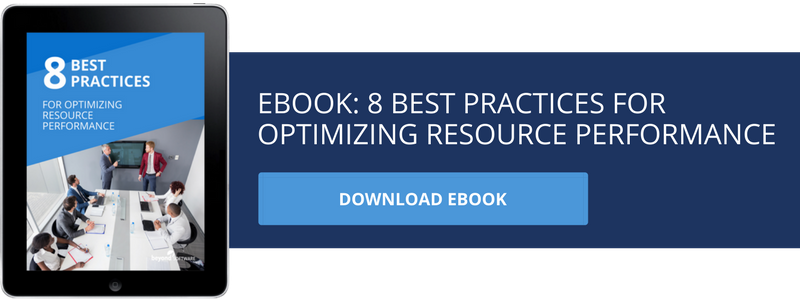I remember reading a story by Stephen Covey in his “Seven Habits of Highly Effective People”, first published in 1989. Stephen talks about a ride on the New York subway early one Saturday morning. People were sitting quietly reading the paper, catching a nap, or just lost in thought.
At one stop a man and his children got onto the train. The children were loud and obnoxious and the father did not seem to care. Stephen Covey finally turned to the man and said “Sir, your children are really disturbing a lot of people. I wonder if you couldn’t control them a little more?”
The man lifted his head and seemed to come back from some unconscious dream state. He looked at Stephen and said, “Oh, you’re right. I guess I should do something about it. We just came from the hospital where their mother died about an hour ago. I don’t know what to think, and I guess they don’t know how to handle it either.”
The point of this story is not to depress the reader. It is to point out a very important concept. Once Stephen understood the perspective leading to the behavior, he was able to have a complete shift in his thinking.
As Stephen Covey puts it:
“Suddenly I saw things differently, and because I saw differently, I thought differently, I felt differently, I behaved differently…”
This is the power of perspective and this power is just as potent in the business world as it is in our personal world.
The power of perspective
So what is perspective in the professional services world? Quite simply it is your historical data. What can you learn by auditing your historical project accounting data?
The 70% Solution:
A few years ago I undertook a survey of approximately 250 business owners. All of these owners were in the professional services industry. I asked those principals, owners and executives in the room a very simple question; “How much of any project is the same?” The answer given to me by those in the room was anywhere from 60% to 70%. This is an incredible fact and if true, everyone reading this post should step back and think about the ramifications of this reality.
Professional services organizations are very similar from project to project. And this is as it should be. Consider that your competitive advantage is your background, experience and proven track record of success. So, it makes sense that we use the past to sell the future!
If 70% of what we create is the same from project to project, then why can’t we “package” that 70%? We could be exceptionally effective, efficient and profitable if 70% of everything we do is a repeat of the projects done before. For example, proposals, engineering drawings, approvals, change orders, statements of work, etc. (the entire process of estimating projects). All of these components are repeated over and over again. Dispatching, FAQ’s, packaged services, common issues, problems and questions… how many can be put into a “self-service” portal or solution that could allow our clients access to information on a 24 x 7 basis? The data is there, so how do we gain access (perspective) to it?
How much of your historical data is open and available to your clients? In a past Geoff Ashley & Associates survey of more than 400 businesses, the single most important competitive advantage being listed by CEO’s and CFO’s was “pushing decision-making to the level closest to the customer.” I would suggest to you that the level closest to the customer is, in fact, the customer!
Historical data in a self-service world
We live in a “self-service” world. Survey after survey states that in any given opportunity, your prospective new client will reach out to you after they have completed the majority of their research. The data suggests anywhere from 50% to as much as 80% of your prospects will be actively researching their decision prior to ever engaging with you or your organization. So how does that tie into historical data?
1. Sharing and Collaboration: Prospective clients buy from people they trust and that is seldom the organization trying to get them to part with their time, money and resources. Within your historical data lies the holy grail. What industries have you succeeded in? Who are your happiest clients? Do you deliver on-time and on-budget? What is your customer satisfaction rating? Obtaining this information and then getting customer testimonials created to clearly communicate this information can have dramatic and positive influence.
2. Access Anything from Any Device: By definition a self-service environment means that your clients and prospective clients must be able to access your data anywhere, anytime and using the device of their choosing. Does your current solution allow for this? If they can’t obtain a “stellar experience” when working with your organization, they can find hundreds of alternatives in “six seconds or less”. That is the reality of the world we live in today.
3. Improving the Client Experience: I have already inferred the need for a “stellar experience” but now I am saying it outright. Your clients and your prospective clients demand a stellar experience. And this requires that you provide them access to historical data. Ask yourself this simple question: “Are we easy to do business with?” Can your clients find out the status of their project, their A/R, etc. Can they easily input issues, changes, requests, questions, etc.? Do you respond within an acceptable period of time? ARE YOU SURE? When is the last time you audited your internal systems? The client experience is priority number 1.
4. Expense Management and the Allocation of Resources: While this point would seem intuitively obvious, it is not. When you really think about it, the ultimate goal of every professional services organization is the effective, efficient and profitable allocation of resources (in that order by the way). While this is the topic of its own blog, the main points to consider here is this:
- How virtual is your organization? We have moved from a “high touch” world to a “right touch” world. Are you delivering value in a “right touch” model?
- What kind of organization are you? Most principals, owners and executives I work with classify themselves as a “professional services” organization. But I would submit that you are not. Remember that all services follow. Remember also that all sales follow. The truly successful professional services companies understand they are a marketing company first and foremost. And every marketing organization understands that your historical data contains “the message”!
- Where are the holes? It goes without saying. Your historical data gives you a perspective on how you are doing? Are you expenses too high? Are your margins too low? Is your EBITDA at or above the industry average? Is your client retention rate acceptable? Do you even track client retention (the data says no).
5. Thought Leadership – The Ultimate Competitive Advantage: I will end this blog with a simple yet profound question; “Are you who you say you are? What subscriptions do you have? What shows, events or activities do you participate in? What whitepapers have your written? How many seminars or webinars have you hosted in the last year?
There was an article published in the Harvard Business Journal that suggested that 100% of the organizations that obtain “Thought Leadership” status within their industry lead that industry. It may be the only place where you can utter the words “always” when referring to a goal or statistic.
Thought leaders always succeed. Always! Thought leadership is dependent upon data. Historical data as well as surveys and research. But thought leadership is, first and foremost, a cultural decision. Thought leadership is a deliberate decision and you need to have the right platforms in place within your professional services organization in order to effectively demonstrate thought leadership within any given industry sector.
Historical data is all about perspective. Having an appropriate, accurate, current perspective is the first step for those organizations that are interested in dominating within the industries they choose to serve.
For additional information on the project accounting solution to manage and analyze your project portfolio please contact:
Nicole Holliday
nholliday@beyondsoftware.com
866-510-7839




